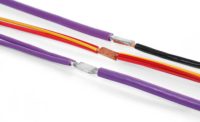MOUNTAIN VIEW, CA—Reliable Robotics Corp. has completed a series of remotely operated test flights of an autonomous cargo aircraft. A remote pilot in the start-up company’s control center instructed an upgraded Cessna 208 Caravan to taxi, takeoff, maneuver over a populated region and land while communicating with nearby air traffic through the aircraft’s onboard radios.
“The flights mark a significant advancement for remotely piloted commercial aircraft in the United States,” claims Robert Rose, CEO of Reliable Robotics. “The test flights serve to advance [our] main objective of certifying the system for use on any aircraft.”
Early test flights are conducted by a remote pilot seated in the control center, while an onboard safety pilot concurrently monitors flight performance. Data and experience gathered during each flight informs future engineering decisions, supports operational design within the workspace, and helps test and improve onboard control systems. With regulatory oversight and experimental approval to fly remotely piloted aircraft, Reliable Robotics plans incremental certification with gradually increasing autonomy.
“In recent years, the aviation industry has moved to the forefront of commercial autonomous vehicle development,” explains Rose. “Governed by strict regulations, the anticipated integration of remotely piloted planes promises greater efficiencies related to time, cost and access. Once certified for commercial use, advanced aircraft automation will allow operators to meet rising cargo demands and eventually offer more convenient flight options for passengers.
“By expanding the use of small regional airports in underserved markets, major carriers will be able to open new routes and improve delivery speeds,” says Rose. “Without reliance on local crew availability, flight turnarounds will be faster.
“Pilots will no longer be limited to flying specific types of aircraft, the same routes or only one to two flights a day,” Rose points out. “Geographically distributed control centers will enable constant operation across time zones, giving remote operators the ability to fly more frequently than traditional airlines.
“The demonstration from our control center highlights how our system incorporates the best of both—advanced automation and people—to improve aircraft operations,” adds Rose. “When this technology becomes commonplace, we’re going to see a far safer and more productive National Airspace System for all participants.”



